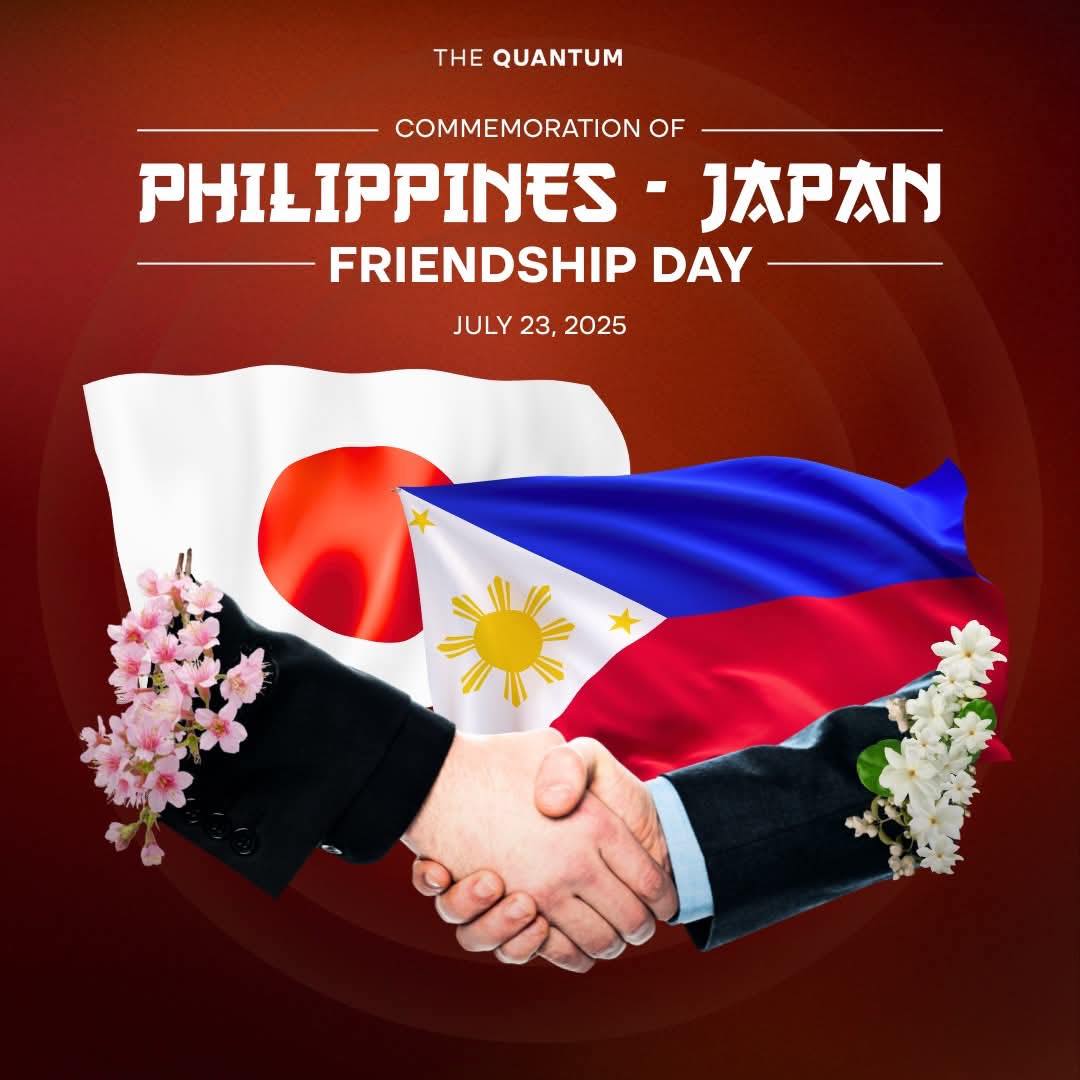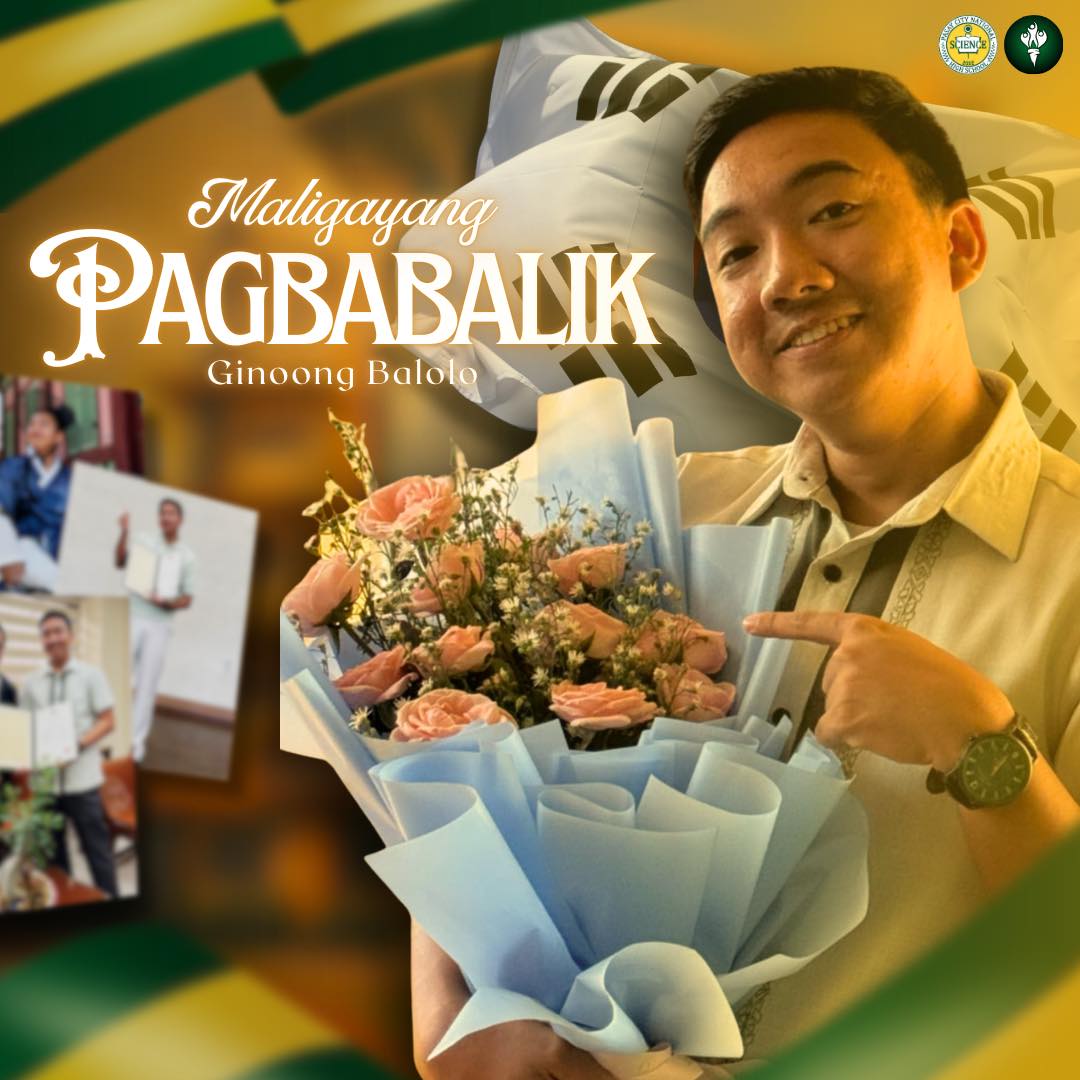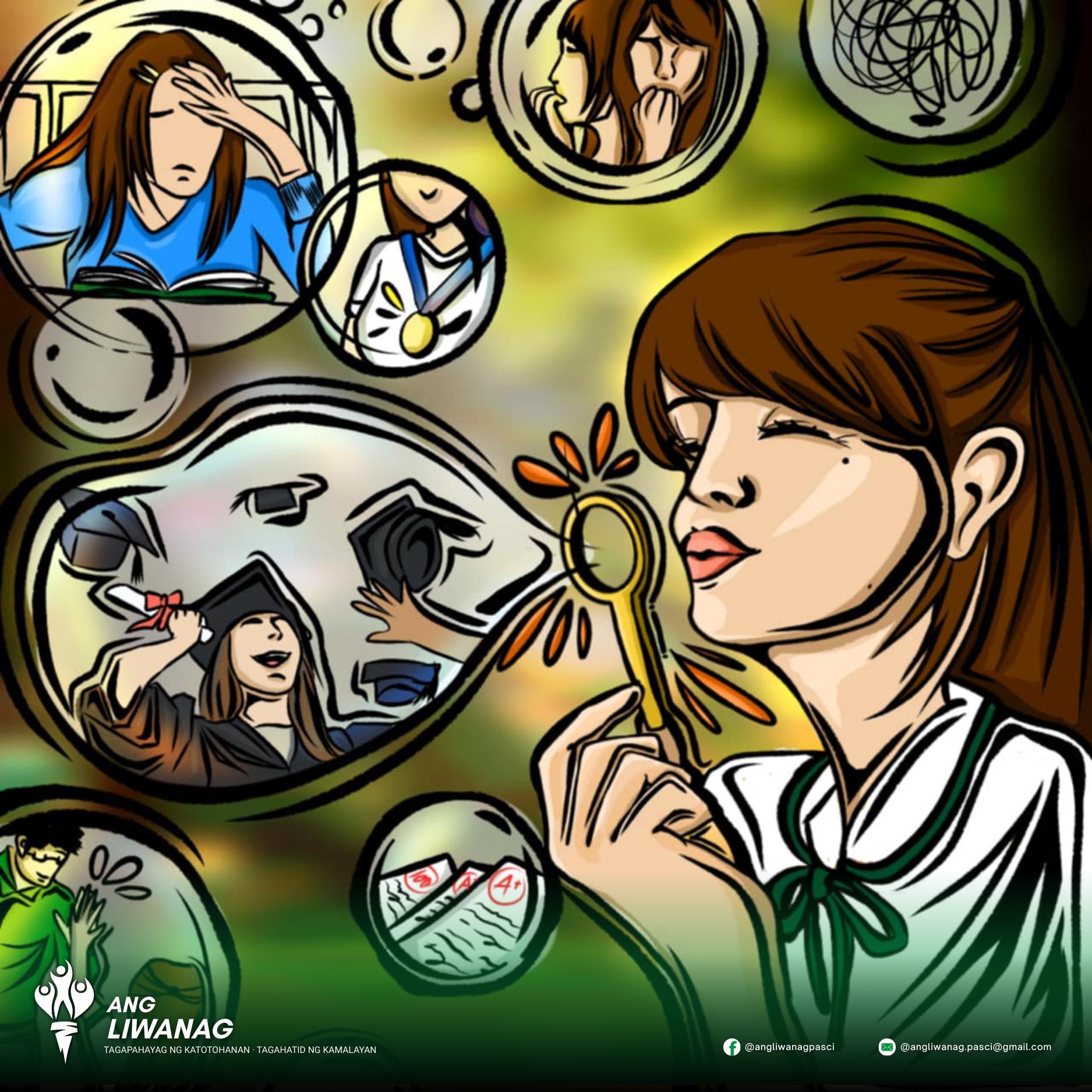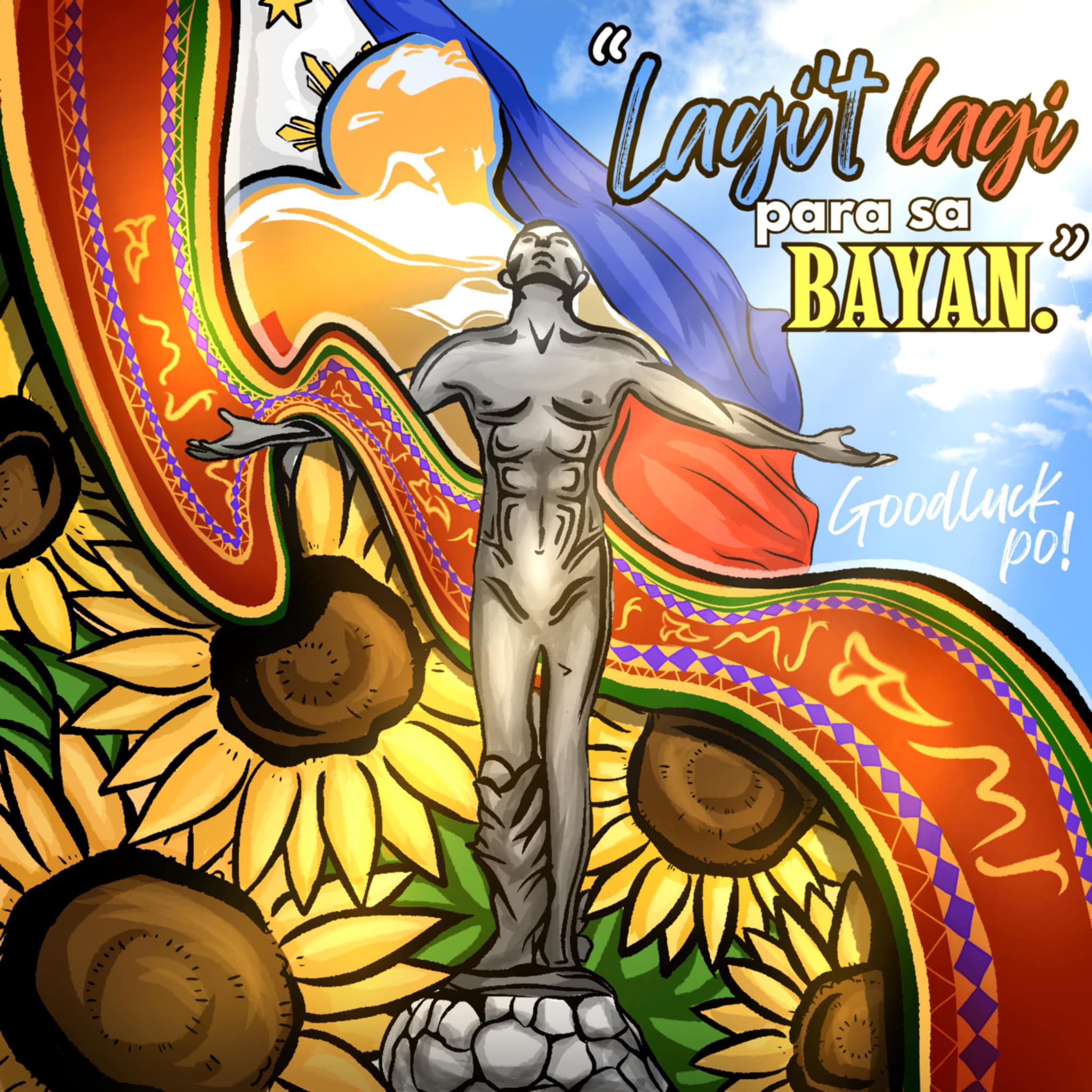| Danica Wayne D. Araneta| Leigh Ann Prado Rebultong hubad—simbolo ng walang pag-aalinlangang pag-aalay ng sarili, ng sakripisyo, at tapat na paglilingkod para sa bayan. Numero unong unibersidad na matatagpuan sa Pilipinas. Hinahangaan, tinitingala at pinapangarap ng karamihan. Ang makapag-aral at higit sa lahat, makapagtapos dito, ay itinuturing na isang malaking tagumpay. Tagumpay na nagbibigay pag-asa at panibagong sigla sa sinumang nangangarap. Ngunit ano nga ba ang taglay ng Unibersidad ng Pilipinas at ito’y itinuturing na hangarin ng napakaraming kabataang Pilipino? “Mahirap makapasok d’yan!”, “Parang magsusuot ka sa butas ng karayom bago ka makapasa!”, ”Kapag nakapagtapos ka riyan, abot langit ang tuwang mararamdaman mo!” Iilan lamang ito sa mga komentong madalas kong naririnig. Sa bawat araw na puno ng pasanin mula sa mga pagsusulit, takdang-aralin, at iba pang gawaing pang-akademiko, hindi natin maiwasang itanong sa sarili: “Paano ko mararating ang unibersidad na kinikilala bilang sagisag ng tagumpay at oportunidad na matagal ko nang minimithi?” Ang Unibersidad ng Pilipinas ay hindi lamang basta – basta isang pampublikong paaralan. Isa itong kinatawan ng mga pangarap — mga pangarap na nangangailangan ng ‘di matatawarang dedikasyon, sakripisyo, at pagsisikap. Madalas, ang kaisipang ito ang nagsisilbing apoy na nagtutulak sa atin upang magpatuloy sa kabila ng pagod, puyat, at hirap. At ang laban na ito ay hindi lamang para sa ating mga sarili, kundi para rin sa mga taong patuloy na naniniwala sa atin, at sa ating mga kakayahan. Ang landas patungo sa UP ay hindi madaling tahakin. Puno ito ng mga pagsubok, pagdududa, at paulit-ulit na tanong kung sapat na ba ang ating ginagawa. Ilang oras na ba ang ginugol sa pag-aaral ng mga leksyong tila hindi maintindihan? Ilang gabi na bang tulog ang isinakripisyo, ilang kasayahan ang ipinagpaliban, at ilang beses na bang muntik nang sumuko? Ngunit sa kabila ng lahat ng ito, patuloy pa rin tayong naniniwala. Dahil alam nating ang bawat hirap ay may kahihinatnang ginhawa—isang mas maliwanag na kinabukasan hindi lang para sa atin, kundi para sa ating mga pamilya. Ang pagpasok sa UP ay hindi lamang usapin ng mataas na marka o katalinuhan. Ito ay higit na pagsubok ng tibay ng loob, determinasyon, at handang magsakrapisyo lampas pa sa inaakala ng iba. Sa bawat gabing pinipilit mong manatiling gising upang matapos ang mga gawain, sa bawat pagsubok na pilit mong nilalampasan, ipinapakita mo sa sarili mo na kaya mong abutin ang pangarap mo. Ang maging Iskolar ng Bayan. Ang pangarap na makapasok sa UP ay nagsisilbing ilaw sa madilim na daan. Isang inspirasyon sa ating mga puso upang hindi sumuko., Tinuturuan tayo ng pangarap na ito na ang tagumpay ay hindi nakakamtan sa isang iglap, kundi bunga ng pananalig, tiyaga, at pusong handang magsilbi sa lahat. Hanggang sa dumating ang araw na hawak mo na ang liham ng pagtanggap, hanggang sa maisuot mo na ang sablay na sagisag ng tagumpay, patuloy tayong mangangarap, magsusumikap, at maglilingkod sa nasasakupan. Dahil sa Unibersidad ng Pilipinas, ang bawat pangarap ay nagkakaroon ng layunin—ang maging tunay na alagad ng bayan.

Cashing Out Childhood
by: Henry Clark CabigonGraphics by: FreAnne Grace TenedorCopyedited by: Joebbie Gaugano When we are still children and even now as adolescents, we learn and develop, not by dictation but by experience. As the Swiss psychologist Jean Piaget says, “Play is the work of childhood,” reiterating that playing is not just a way for children to pass time or have fun but also their most important form of learning and development. But what if this play is not the conventional, traditional definition of playing with friends on the streets but rather on the dangerous abyss of online clicks, dice, and bets, which is online gambling? Currently, authorities are taking a step against this dangerous platform if unregulated. Government agencies like PAGCOR and lawmakers such as Senator Zubiri have filed bills to impose stricter regulations to shield minors from these predatory platforms. PAGCOR, on the other hand, orders the takedown of ads pushing gambling on billboards, aiming to eradicate its pushy and encouraging narratives. These efforts, blocking websites and demanding better age verification, are a crucial first line of defense. This digital form of gambling poses a more complex and unpredictable danger to young people today. Unlike physical casinos that have bouncers and stricter rules, online gambling is open around the clock and accessible from anywhere, including homes and public spaces, using only a smartphone. These sites, using creative graphics and exciting sound effects, are carefully made to appeal to young people, making it difficult to distinguish between real gambling and the mobile games we already enjoy. This transforms the idea of play from a fun, social activity into a lonely, high-stakes obsession that removes the value of patience and hard work, replacing them with the lie of easy money. These then turn into debt, failing grades, anxiety, and a diminished pathway to a better future. However, this is not a problem the government can solve alone. The internet is vast, and for every illegal site that is taken down, another can rise almost instantly. The fight against online gambling cannot just be won in Congress; it must also be taught in our homes and classrooms. The ultimate defense against this digital threat requires a united effort from all of us. For parents, it means having open, honest conversations about the real dangers hiding behind these screens and being aware of their children’s online activities. For our schools, it means integrating digital and financial literacy into the instruction, teaching students how to see past the marketing gimmicks and understand the consequences when we try to play with online gambling. And for us, the youth, it means being vigilant protectors of our own well-being and that of our friends, because if we don’t take a stand now, we may be gambling away not just money, but our very future.

Bridging Borders: Philippines-Japan Friendship Day
by: Danella De Vera Copyedited by: Carlos Agripa Publication by: Yelena Fabricante Association is one thing; amity is another. Aligning is one thing; intertwining is another. Yesterday, July 23, marked the 69th year celebration of a significant partnership—a friendship that tied knots and raveled unfinished history, one that transcended borders, bonded in culture, and paved the way for peace. Almost seven decades ago, the diplomatic relations between the Philippines and Japan were formalized through the signing of the Peace Treaty and Reparations Agreement on July 23, 1956. Consequently, to recognize the celebration of the 50th anniversary of the nations’ relations, President Gloria Macapagal Arroyo declared July 23 as the official Philippines-Japan Friendship Day and 2006 as the Philippines-Japan Friendship Year through Proclamation 854 s. 2005 and Proclamation 905 s. 2005, respectively. Enriching this friendship through frequent gatherings and affiliations, the Philippines and Japan have accomplished several notable projects: Transport and Infrastructure Development Under Japan’s first cooperation pillar of ‘Strengthening a Foundation for Sustainable Economic Growth’ railway developments in Metro Manila were implemented. Under this is the ongoing provision of financial and technical support in the Metro Manila Subway project and the rehabilitation and modernization of the Metro Rail Transit (MRT) Line 3. Equipped with Japan’s advanced technology, these projects aim to accommodate the increasing demand in transportation and to aid traffic congestion and issues of frequent malfunction. Along with this, Japan has also been involved in several road and bridge projects around the Philippines, including the Davao City Bypass, the Cebu-Mactan 4th Bridge, and the San Juanico Bridge. Life Protection and Capacity Development Japan has also taken part in assistance to several healthcare, medical, and hygiene services in the country. This includes advanced medical equipment, infectious disease control, vaccination facilitation, and social rehabilitation. Moreover, to ensure the increase of opportunities and to recognize potentials, Japan has provided aid in education, including the funding for construction of schools and facilities, academic scholarships, and exchange student and teacher programs. Through several partnerships, Japan has also provided job opportunities in the country under the automotive, high-tech, electricity, and chemicals sectors in the Philippines. Contributions to Peace and Stability In the pursuit of peace and solitude, after years of conflict, Japan has implemented a wide range of assistance in the consolidation of peace in Mindanao, particularly the reconstruction of Marawi City after armed conflict in 2017. Training assistance to the Philippine Coast Guard and advanced armaments to the Philippine National Police were also provided to strengthen law enforcement and capabilities, proving that Japan stands with the Filipino people and is ready to assist the country to safety. The Philippines-Japan partnership proves a partnership that is built not only on mutual goals but on a profound sense of solidarity. This bond serves as a bridge between borders of culture and technology. And just like human-to-human friendships, the relationship between nations can stand the test of time, reminding us that in the face of challenges, company matters. References: The Modernization and Extension of Light Rail Transit Line 1 (LRT-1). Embassy of Japan in the Philippines, https://www.ph.emb-japan.go.jp/files/100816860.pdf. Accessed 24 July 2025. �Japan’s Official Development Assistance (ODA) to the Philippines. Ministry of Foreign Affairs of Japan, https://www.mofa.go.jp/files/100217186.pdf. Accessed 24 July 2025. �”The Philippines and Japan Celebrate 69 Strong Years of Friendship.” The Manila Times, 23 July 2025, https://www.manilatimes.net/…/the…/2153637/amp. Accessed 24 July 2025.

The Stillness Between
by: Angel Mae SeCopyedited by: Jewel Winslet VallejoPublication by: Rianne Lopez In the corner of everyone’s eyes lies an often overlooked presence, not because it is silent, but because the world forgets how to listen. Stories are sometimes left to just be words themselves—not a journey in someone’s life. Even songs that were once sung with emotions are starting to only be a beautiful melody—not as a sincere memory. Perhaps, the world really forgets how to listen. If so, what will happen to those voices that pleads to be heard? To the poems that ask to be emphasized? What will happen to those silent chronicles of their lives? For one person, this kind of scenario is not a distant observation; it is her daily rhythm. Every morning, she ties her shoelaces twice—to check if she did it right. She folds her notes three times, always in perfect halves. She lines her pencil on her desk every morning in perfect symmetry, erasers facing north, tips all sharpened to the same angle. When her teacher moves one out of place, she doesn’t dare speak it out. She waits until no one else is watching—moving like a keen specimen—then quietly puts it back. This little girl never dares to call it out by name. Most days, she does not even know if naming it would make people around her understand or just make them view her as a freak. Her heart speaks for integrity, yet the world seems to be full of insincerity. The thoughts inside her mind are telling her that things have to be perfectly precise. Not for comfort, but to control the voices in her mind that says, “If you don’t dare to do so, cataclysm will happen along your way.” The hardest battle is sometimes not about fighting the threat of others, but the threat your own self gives. But what others don’t see is the panic when she forgets if she washed her hands after touching her bag. The shame when she spends fifteen minutes rewriting a sentence because the letters never always look even in her eyes. The tightness in her chest when her daily routine is interrupted; how her heart races out of dread. She sits in classrooms where the lessons move too fast, where interruptions send her spiraling, where every group work means hiding the fear of being touched, judged, or rushed. Through it all, her only wish was for people to understand that her mind is a storm she has learned to walk through everyday—that her silence is not absence and that her sense of order is not an obsession. Rather, it is her way of survival. Moving forward was her only ace, and though the repeated explanations may seem defective to others, for someone whose ears are open—her stories are finally understood. For a single ear to hear and an eye to see, one’s stories began to light up for the world to see. The little girl who once used to hide her rewritten notebooks began showing it. Her voice is heard whenever the routine she sets up breaks—even her breath starts to falter. Although some still roll their eyes, a few began to listen. Not because of sympathy, but of respect. For a long time, she finally began to call it pride, not because she’s unafraid, but because she is learning that her difference does not need fixing. Nevertheless, it needs seeing, it needs honoring. And in a world that forgets how to listen, she learns to speak anyway—not loud, but clear. In every stillness within her, there lies a disability that most people tend to forget. Obsessive Compulsive Disorder—a story some share, not as a flaw to be erased, but as a truth to be embraced. A stillness that does not ask for pity. Rather, space. A quiet amidst the noise—where dignity lives, where identity breathes, and where, at last, they are heard.

Korean Odyssey: Balolo’s Global Journey with Media Literacy
via Elyzza Esteban | The QuantumPhotos by: Mark Reniel BaloloPublication: Yelena Fabriancte Mark Reniel R. Balolo, participant under the 2025 Korea-Philippines Teacher Exchange Program (KPTEP), has officially returned to the country after a three-month teaching and cultural exchange stint at Suncheon Hyosan High School in South Korea, this Monday—July 14. Balolo, who represented the Philippines in the international exchange program, delivered lectures centered on Media Literacy—empowering students with critical skills to responsibly and effectively engage with digital platforms. The KPTEP program seeks to promote global citizenship through education, while fostering intercultural understanding between Korea and the Philippines. Capping his stay, Balolo was chosen to take part in the final presentation of their projects for the Philippines, showcasing details regarding his lectures regarding media literacy and its impact on his students, held last Friday, July 11. The event was also attended by Dr. Margarita Ballesteros, Director from the Department of Education, and Edwin Gil Q. Mendoza, Deputy Head of Mission at the Philippine Embassy in South Korea, who both offered feedback on the presentation. Along with Mr. Balolo, the final presenters also included Ms. Ma. Lourdes D. Rola from Caloocan High School, Ms. Toni Rose S. Sayson from Dumaguete Science High School, and Mr. Raleigh J. Ojanola from Koronadal Comprehensive High School. Upon his return, Mr. Balolo paid a courtesy call to Schools Division Superintendent Dr. Joel T. Torrecampo, CESO VI, wherein he was joined by Pasay City National Science High School Principal Dr. Mark Anthony F. Familaran, Assistant Principal Mrs. Sarah Jane T. Delos Santos, and Head Teacher III Mrs. Jackyline T. Lagaña.

Magiting na Guro, Inspirasyon ng Bayan
:Althea Loro: Ashley Ballesteros “Annyeonghaseyo,” marahil ang isa sa mga naging bukambibig niya sa mga nagdaang buwan. Talagang nakamamanghang isipin na ang kaniyang kakayahan bilang isang guro ay hindi lamang naranasan ng mga mag-aaral dito sa Pilipinas. Dinala niya ang kultura at edukasyon ng lupang sinilangan sa ibang bansa—sa katimugan ng Korea o mas kilala bilang South Korea. Matunog ang kaniyang ngalan dahil sa kaniyang posturang makaagaw pansin, mga matang laging nagmamasid, at tinig na naabot ang kaloob-looban ng sinumang kaniyang makasalamuha. Kilala n’yo ba siya? Isa siya sa apat na mapapalad at nagkaroon ng pagkakataong lumipad papunta sa banyagang lupa. Ang oportunidad na ito ay hindi madaling makuha subalit dahil sa sipag at tiyaga, sa lahat ng mga tagapagturo sa Pilipinas, siya ay isa sa mga napiling kinatawan ng ating bayan. Sa ilalim ng Korea-Philippines Teacher Exchange Program 2025 o KPTEP, siya ay nagturo sa Suncheon Hyosan High School mula Abril 15 hanggang Hulyo 12. Maliban pa sa pagiging panday-kaalaman, nagningning din siya bilang simbolo ng kultura sa ginanap na World Day for Cultural Diversity for Dialogue and Development—isang selebrasyong ipinagdiriwang ang iba’t ibang kultura sa mundo. Taas-noo siyang rumampa sa ginanap na fashion show habang suot ang Barong Tagalog, ang pambansang kasuotan ng kalalakihan sa bansa. Iginagalang, tinitingila, at hinahangaan. Tunay siyang inspirasyon hindi lamang ng kabataan kundi pati na rin ng mga guro. Hindi lamang aral na magagamit sa paaralan ang kaniyang ibinabahagi; hindi rin siya nagdadalawang-isip na magbigay ng mga salitang tatatak sa isip at puso ng bawat isa. Saglit man ang kaniyang naging paglalakbay, tiyak kong maraming naabot ang kaniyang tinig na makapangyarihan. Paulit-ulit niyang pinatunayan na ang kaniyang kakayahan ay hindi lamang limitado sa Pilipinas. Sa alinmang larangan siya tumindig—bilang guro, mamamahayag, o tagapagsalita, hindi magmamaliw ang sinag ng kaniyang diwa na nagbibigay-ilaw at pag-asa sa nakararami. Kilala n’yo na ba siya? Kung gayon, sabay-sabay natin siyang batiin ng… Maligayang pagbabalik, G. Mark Reniel L. Balolo!

Sa pagiging isang estudyante, may mga araw talagang parang wala ka namang napapala.
: Leigh Ann Prado Sa pagiging isang estudyante, may mga araw talagang parang wala ka namang napapala. Gumising ka nang maaga, naghabol sa siksikang jeep, at pumasok kahit walang tulog – tapos babagsak ka rin pala sa quiz. Kaya minsan, mapapaisip ka na lang talaga, “Para saan pa ba ‘to?” Ganiyan ang paulit-ulit na tanong ng isang tulad kong mag-aaral na gusto nang huminto kahit sandali — ngunit babangon din namang muli. Maraming araw na sunod-sunod ang gawain, sabay-sabay ang deadline, at paulit-ulit ang pagod dahil sa mahabang oras ng klase. Pero tila walang bumabalik mula sa lahat ng paghihirap ko. Para bang ako na lang palagi ang lumalaban, at wala ni isa ang handang sumalo. Sa bawat taon mo sa paaralan, paniguradong may iba-ibang “ikaw” na lumilitaw. Tulad ko, may bersyon ka ring puyat kaka-review pero bumagsak pa rin. May bersyon kang sumaya dahil minsan kang napansin at pinuri ng guro. At may bersyon ka ring hawak ang medalya o sertipiko habang naiiyak – dahil alam mong hindi naging madali ang pinagdaanan mo. At ang hindi mo napapansin, sa bawat “ikaw” na dumaraan, unti-unti mong binubuo ang sarili mong kuwento. Kuwento ng pangangarap kahit pagod na. Kuwento ng lakas ng loob kahit pinanghihinaan na. At kuwento ng mga pagkakamaling nagtuturo sa ‘yo kung paanong muling bumangon. Lahat ng naging bersyon ng ating mga sarili – ‘yung pagod, ‘yung umiyak nang palihim, ‘yung minsang gusto nang sumuko, at ang tahimik pero patuloy na lumalaban – sila ang nagturo sa atin kung paano maging tayo ngayon. Sila ang nagtulak sa atin para matuto at magpatuloy. At sa dami ng laban na ating hinarap, tayo ang tunay na panalo. Hindi dahil sa tayo’y perpekto, kundi dahil hanggang ngayon, nandito pa rin tayo. Ang “ikaw” na minsang mahina, takot, pero matapang – ay naging saksi sa pagbuo ng isang estudyanteng hindi lang matalino, kundi matatag. Hindi lang palaban, kundi buo. At sa pagtatapos ng lahat ng ito, darating ang araw na pasasalamatan mo ang lahat ng naging bersyon ng sarili mo. Maging bersyon mo man ito na hindi huminto – o kahit pa ‘yung bersyon mong sumuko.

Gastropod Species of the Last Natural Baston of Metro Manila, Philippines
: Alaiza Cruz: Ashley Ballesteros Isang bagong pag-aaral sa Las Piñas-Parañaque Wetland Park ang nagbunyag ng mababang bilang ng marine gastropods na palatandaan ng matinding epekto ng polusyon at urbanisasyon sa natatanging wetland na ito sa Metro Manila. Kinabilangan ng mga dating estudyante ng Pasay City National Science High School (PCNSciHS) na sina Guianne Emmanuelle F. Angsanto, Dyanne Kimberly Q. Lao, Ryza Jane Cezar, Arnold Janssen G. Sumilang, Olivia Estephanie A. Basul, Felmyr Jhude B. Gamboa, Veronica Anne L. Hernandez at Clarence Vince M. Ikalina, dating research adviser na si G. Christian Jayvon C. Laluna, at mga partner researchers galing Polytechnic University of the Philippines (PUP) College of Science na sina G. Alvin N. Caril, Bb. Arial Joy J. Roderos, at G. Noel A. Saguil ang naturang pag-aaral. Ayon kay Guianne Angsanto, ang lider ng grupong nagsagawa ng pag-aaral, ang mga pangunahing sanhi ng polusyon at urbanisasyon sa wetland ay kinabibilangan ng patuloy na pagtatambak ng basura, land reclamation, at coastal development. Ang mga pagbabagong ito ay nagiging sanhi ng pagkasira ng natural na tirahan ng mga marine gastropods, lalo na sa mga mangrove area na bahagi ng focus ng kanilang research. “Kapag bumaba ang kalidad ng tubig, nasira ang mga tirahan, o dumami ang mga invasive species, ito ay malaki ang epekto sa populasyon ng mga gastropods,” ani Angsanto. Ang lugar ay itinuturing na Ramsar site o internasyonal na protektadong basang-lupa kung kailan ngayon ay humaharap sa panganib. Kailangan na ang agarang aksiyon para mapanatili ang natitirang baybaying santuwaryo ng siyudad. Pagbati sa ating mga mananaliksik! Basahin ang buong ulat sa Vol. 54 (1) Spring 2024: https://ams.wildapricot.org/AMS-Newsletter

𝗜𝘀𝗮𝗻𝗴 𝗱𝗲𝗸𝗮𝗱𝗮 𝗮𝘁 𝗽𝗶𝘁𝗼𝗻𝗴 𝘁𝗮𝗼𝗻.
Matagal pa, pero ako’y pagod na pagod na. Ibang-iba na ang tingin ko sa buhay ngayong dose-dosenang responsibilidad na ang aking kinahaharap. Mula sa aming munting tahanan hanggang sa paaralan, tila ba’y sandali na lamang ay iwawagayway ko na ang puting bandila, dala-dala ang aking mga sakripisyo at paghihirap. Alam kong hindi agad natatapos ang paglalakbay para sa aking mga pangarap. Kaya hangga’t maaari, sinusubukan kong tibayan ang loob ko at patuloy na kayanin ang mga hamon ng buhay. Kaya naman, sa tuwing pinanghihinaan ako ng loob ay sinusulatan ko ang aking sarili–hindi upang humingi ng simpatiya, kundi upang mag-iwan ng paalala: Kinaya ko ang kahapon at patuloy akong lalaban para sa mga susunod na bukas. Naalala ko noon, ang dami kong kailangan gawin. Kailangan kong mag-ensayo para sa performance task sa sayaw, mag-aral para sa sunod-sunod na pagsusulit kinabukasan, at higit sa lahat, maghanda para sa presentasyon ng grupo. Aaminin ko, sa mga oras na ‘yon, gusto ko na lang maglaho o ‘di kaya’y maging isang pusang kain-tulog lang ang ginagawa sa buong maghapon. Dumating pa nga ako sa punto na napadasal ako ng, “Lord, hindi po ako bahagi ng sandatahang lakas Ninyo…” Pero syempre, ‘di ko tinuloy dahil baka madagdagan na naman ako ng minus 1 sa langit. Ang nagawa ko na lang ay tumingin sa salamin at umiyak. Limang minuto lang. Kasi kailangan ko pa rin talagang mag-aral. Pero sa limang minuto na ‘yon, may nakita akong iba sa salamin. Hindi ang ako na ngayon, kundi ‘yung batang ako. Umiiyak din siya. Pagod ding tulad ko. Pero may kaibahan kaming dalawa: siya, hindi sumuko. Samantalang ako, litong-lito kung magpapatuloy pa ba o hindi na. Doon ko napagtanto na kung siya, na mas bata at mas inosente, ay kinaya ang lahat– ano pa kaya ako ngayon? Kaya ko rin. Kung paanong sinabayan ng batang ako ang agos ng buhay, siguro, hindi masama kung siya ang maging dahilan kung bakit gusto ko pang ipagpatuloy ang lahat nang ito. Gaya nga ng liriko sa kantang 711 ni Toneejay, gusto kong ibigay buhay na gusto at karapat-dapat maranasan ng batang ako. Salamat sa batang ako, sapagkat hindi siya sumuko. Napagod lang, pero lumaban pa rin. Hindi ko maisusulat ito ngayon kung siya’y nanatili lang sa gitna ng rumaragasang alon ng buhay. Kaya iniaalay ko ang lahat ng tagumpay ko, sa mga pagsubok na kinaya ko, sa mga desisyong naging daan ng aking pagkatuto. Sa kanya. Sa batang ako. Mapapagod lang pero hindi susuko. Para sa lahat ng makababasa nito, nais kong ipaalala sa inyo: ayos lang bumagal. Ayos lang na pansamantalang huminto para huminga. Hindi naman matatapos ang pagtakbo mo sa iyong mga pangarap kung magpapahinga ka. Hindi naman palaging madugo ang problema. Gaya ng lahat ng bagay, ito rin ay lilisan at magbabago. 𝗔𝘁 𝗽𝗮𝗿𝗮 𝘀𝗮 𝗯𝗮𝘁𝗮𝗻𝗴 𝗮𝗸𝗼, 𝘀𝗮𝗹𝗮𝗺𝗮𝘁 𝗱𝗮𝗵𝗶𝗹 𝗸𝗶𝗻𝗮𝘆𝗮 𝗺𝗼. Kaya mo ‘yan. Kaya ko ‘to. Kakayanin natin ang lahat ng ito.

The Algorithm of Emotions
by: Santine Mauritius SusaGraphics by: Cyrelle Rañeses In the Philippines, where internet users spend an average of 4 hours and 6 minutes daily on social media, AI has become a quiet actor that curates not only content, but emotions. While it may seem that Facebook, TikTok, and YouTube simply show what’s “relevant,” the truth is more complicated—and even more concerning. AI systems on these platforms are designed to maximize engagement by learning what triggers reactions—whether that be anger, sympathy, excitement, or fear. The more emotionally intense the content, the more likely it is to be shown. Over time, this creates highly personalized and emotional echo chambers that show the user a feed of what makes them ‘feel’ the most, instead of what’s accurate and factual. What makes this even more dangerous is that AI is no longer just curating content—it is creating it. Tools like ChatGPT, Midjourney, and countless deepfake generators are now used to craft realistic-looking articles, images, videos, and even human voices, with little to no human input. These tools are becoming so advanced that many AI-generated posts are now indistinguishable from real content. Fake news articles can be written with proper grammar, journalistic tone, and convincing statistics—none of which are true. Deepfakes can replicate a politician’s face and voice to say something they never said. AI-generated tweets, memes, and videos can appear organic, especially when shared by trusted influencers or fan pages. These types of content are often paired with emotionally charged stories designed to go viral: stories that provoke anger, reinforce biases, or target vulnerable groups. And when these are amplified by social media algorithms, they spread faster than attemots at counter-acting with verified information—because emotional content is more likely to be clicked, shared, and engaged with. The staggering rise of AI-generated deepfakes on social media is outpacing manual fact-checking, tilting the balance in favor of falsehoods. With a population that’s highly expressive and active online, Filipino users are particularly at risk. Emotional reactions—be it laugh-reacts, rage comments, or teary shares—feed the algorithm’s understanding of what to push next. During the 2022 elections, many Filipinos unknowingly shared AI-generated content ranging from edited videos to false quotes. In many cases, the posts appeared professional, complete with watermarks and fake sources, making them harder to question. As AI-generated misinformation increases, so does public confusion and emotional fatigue. Users are left unsure about what’s real, overwhelmed by conflicting stories, and an increasingly distrustful rise of legitimate sources. This erosion of trust in both media and institutions is one of the most damaging long-term effects of emotional manipulation online. The first step in resisting this manipulation is understanding that not everything in your feed is real—or neutral. Users should be more critical of content that seems overly dramatic, unverified, or too perfectly aligned with personal beliefs. Efforts in digital literacy are being made nationwide, from NGOs to school programs, aiming to teach students how algorithms and AI content work. While regulation and platform accountability remain ongoing debates, the most immediate defense is personal awareness. In an age where artificial intelligence can imitate reality with alarming accuracy, being emotionally informed—and not just emotionally triggered—might be the best safeguard we have.




